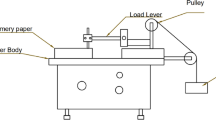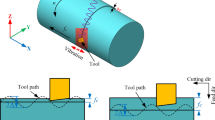Abstract
Flow drill screw (FDS) driving is a thermomechanical assembly process that allows for single-sided access multi-material joining, with a high application potential for modern lightweight vehicle design. The process combines three consecutive operations which partially overlap: flow drilling, thread forming, and tightening. The paper extensively investigates the process parameter effects on the flow drilling operation of thin sheet AA5182-O 2.5-mm thick and DP600 1.4-mm thick. Drilling defects have been associated with specific ranges of control parameters. Mechanical tests have shown that the drilling defects do not have a significant impact on the mechanical strength of the assembly under static loading. These results were used to determine both the optimal joining parameters and the robust process window. The variation of all process-relevant mechanical quantities was recorded over the whole available process window. This data may further serve for process simulation validation, or alternatively for the construction of data-driven meta-models.















Similar content being viewed by others
References
Martinsen K, Hu SJ, Carlson BE (2015) Joining of dissimilar materials. CIRP Ann Manuf Technol 64(2):679–699
Meschut G, Janzen V, Olfermann T (2014) Innovative and highly productive joining technologies for multi-material lightweight car body structures. J Mater Eng Perform 23(5):1515–1523
Miller SF, Blau PJ, Shih AJ (2005) Microstructural alterations associated with friction drilling of steel, aluminum, and titanium. J Mater Eng Perform 14(5):647–653
Fromentin G, Bierla A, Minfray C, Poulachon G (2010) An experimental study on the effects of lubrication in form tapping. Tribol Int 43(9):1726–1734
Urbikain G, Perez JM, López de Lacalle LN, Andueza A (2018) Combination of friction drilling and form tapping processes on dissimilar materials for making nutless joints. Proc Inst Mech Eng B J Eng Manuf 232(6):1007–1020
Skovron JD, Prasad RR, Ulutan D, Bo B, Paolini D, Mears L, Claus L, Detwiler D (2015) Effect of thermal assistance on the joint quality of Al6063-T5A during flow drill screwdriving. J Manuf Sci Eng 137(5):051019
Streppel AH, Kals HJJ (1983) Flowdrilling : a preliminary analysis of a new bush-making operation. CIRP Ann Manuf Technol 32(1):167–171
Zimmer S, Langlois L, Laye J, Bigot R (2010) Experimental investigation of the influence of the FSW plunge processing parameters on the maximum generated force and torque. Int J Adv Manuf Technol 47(1-4):201–215
Markov OE, Perig EV, Markova MA, Zlygoriev VN (2016) Development of a new process for forging plates using intensive plastic deformation. Int J Adv Manuf Technol 83(9-12):2159–2174
Miller SF, Tao J, Shih AJ (2006) Friction drilling of cast metals. Int J Mach Tools Manuf 46(12–13):1526–1535
Lee SM, Chow HM, Huang FY, Yan BH (2009) Friction drilling of austenitic stainless steel by uncoated and PVD AlCrN- and TiAlN-coated tungsten carbide tools. Int J Mach Tools Manuf 49(1):81–88
Miller SF, Li R, Wang H, Shih AJ (2006) Experimental and Numerical Analysis of the Friction Drilling Process. J Manuf Sci Eng 128(3):802
Qu J, Blau PJ (2008) A new model to calculate friction coefficients and shear stresses in thermal drilling. J Manuf Sci Eng 130(1):014502
Skovron J, Mears L, Ulutan D, Baeumler B, Paolini D, Claus L, Detwiler D (2014) Characterization of flow drill screwdriving process parameters on joint quality. SAE Int J Mater Manuf 8(1):35–44
Chow HM, Lee SM, Yang LD (2008) Machining characteristic study of friction drilling on AISI 304 stainless steel. JMPT 207(1–3):180–186
Sønstabø JK, Holmstrom PH, Morin D, Langseth M (2015) Macroscopic strength and failure properties of flow-drill screw connections. J Mater Process Technol 222:1–12
Kerkhofsa M, Van Stappena M, Quaeyhaegensb C, Stals LM (1994) The performance of ( Ti , A1 ) N-coated flowdrills. Surf Coat Technol 68(1):741–746
Grossberndt, Hermann, Gunter Kretschmer, and Horst Klees. (1993) Hole forming and selftapping screw. U.S. Patent No. 5,234,301. 10 Aug. 1993
Aslan F, Langlois L, Mangin P, Balan T (2018) Identification of drilling parameters during the flow drill screw driving process. Key Eng Mater 767:465–471
Szlosarek R, Karall T, No E, Hahne C, Meyer N (2013) Mechanical testing of flow drill screw joints between fibre-reinforced plastics and metals. Mater Test 55(10):737–742
Jawahir IS, Oxley PLB (1988) The tool restricted contact effect as a major influencing factor in chip breaking: an experimental analysis. CIRP Ann Manuf Technol 37(1):121–126
Kim TH, Yum J, Hu SJ, Spicer JP, Abell JA (2011) Process robustness of single lap ultrasonic welding of thin, dissimilar materials. CIRP Ann Manuf Technol 60(1):17–20
Sønstabø JK, Morin D, Langseth M (2018) Testing and modelling of flow-drill screw connections under quasi-static loadings. J Mater Process Technol 255(7491):724–738
Funding
This work was supported by IRT M2P (Institut de Recherche Technologique Matériaux, Métallurgie et Procédés), the French PIA (Plan d’Investissement d’Avenir), and a consortium of industrial partners through projects SAM and PIRAMID.
Author information
Authors and Affiliations
Corresponding author
Ethics declarations
Conflict of interest
The authors declare that they have no conflict of interest.
Additional information
Publisher’s note
Springer Nature remains neutral with regard to jurisdictional claims in published maps and institutional affiliations.
Rights and permissions
About this article
Cite this article
Aslan, F., Langlois, L. & Balan, T. Experimental analysis of the flow drill screw driving process. Int J Adv Manuf Technol 104, 2377–2388 (2019). https://doi.org/10.1007/s00170-019-04097-z
Received:
Accepted:
Published:
Issue Date:
DOI: https://doi.org/10.1007/s00170-019-04097-z




